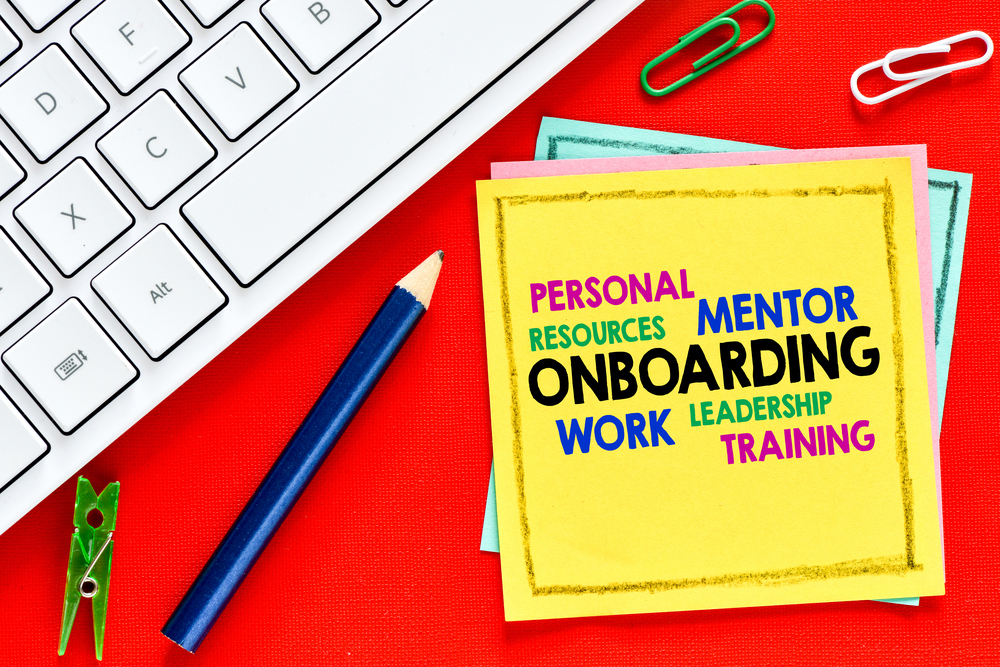Onboarding is a key element of any employee development strategy. After the interview process and the new hire’s own company research, onboarding is the first real taste the employee gets of where he or she will be working.
Effective onboarding sets the tone for the company culture, as well as the expectations of the employee. Onboarding is also key to employee retention, which is increasingly important in a heavily talent-focused economy and in a tight labor market.
While some aspects of onboarding are relevant regardless of the company’s size and industry, others should be influenced by the nature of the organization. Here, we’ll talk about some factors that should influence your company’s onboarding program.
Company Culture
New hires should be given insight into the company culture during the onboarding process. Company culture is made up of the values, attitudes, processes, and practices of the organization as a whole.
It’s often difficult for companies to steer their culture where they want it to go, precisely because it’s made up of so much input from individual employees. The onboarding process is a key time for the organization to instill its cultural vision in new hires.
Company Goals and Focus
The onboarding process is also a great time to reinforce the company’s objectives and mission in a new hire.
Is the company’s sales strategy volume-driven or value-driven? Are there certain areas the company has become focused on? What is the organization’s 5-, 10-, or 25-year vision?
Industry
Ideally, your new hires will be familiar with your company’s industry. But that’s not always the case. Not every new hire is directly involved in the core business of the organization.
For example, an auto parts manufacturer may hire an experienced administrative assistant, in-house attorney, accountant, or communications professional who isn’t necessarily familiar with the auto parts industry. Onboarding is a good time to start building familiarity with the basics of the industry, as well as the current trends and competitive landscape.
| Learn how you can set your new hires up for success when you attend the *FREE* webinar The First 90 Days Will Make or Break Your New Hire on Thursday, January 30, 2020. |
There is a wealth of best practices when it comes to employee onboarding, but it’s a mistake to assume a one-size-fits-all approach will be effective. The type of industry the company operates in, specific company goals, the regulatory company, and the company size and culture should all influence the onboarding process.
Keep in mind that while a new hire will have somewhat gotten to know your organization by the time he or she starts, the onboarding process is a golden opportunity to provide an in-depth first impression.
Onboarding Stages
The onboarding process can be challenging for many organizations. There are so many important factors to consider when bringing in new hires that a company could spend months preparing them for everything they’ll need to know to be a star employee.
At the same time, employees are often hired for an immediate—not a future—need, so companies want to get them up to speed and doing work as soon as possible. An effective way to maintain the balance between thorough onboarding and fast new hire engagement is by having a staged onboarding approach.
Onboarding expert Anja Zojceska provides what she calls the “Ultimate Employee Onboarding Checklist.” In this list, Zojceska breaks down onboarding activities into several phases.
Preboarding
Onboarding starts before your new hire even has his or her first day. Zojceska recommends sending a welcome e-mail to the new hire highlighting the start date and time, location, and first-day schedule. It’s also an opportunity to pass along required paperwork, the employee handbook, and a company info sheet.
Preboarding isn’t just about prepping new hires, though. Before employees start, as much as possible should be done to set up their workstations—some of this might require that the employees be present (i.e., creating passwords, etc.) and include letting their coworkers, manager, and any direct reports know about their arrival.
First Day
The first day is often a busy one, and it’s largely about helping a new hire get his or her bearings. This involves a tour of the workplace and the new hire’s desk or office; meeting with colleagues, managers, and executives in person; and getting set up with HR forms and finalizing work space setup.
First Week
During the first week, Zojceska says you should be checking in with your employee every day, scheduling regular meetings, and scheduling introduction meetings with different teams the new hire will likely be interacting with.
It’s also important to familiarize the new hire with key software tools and platforms during this time. The first week should also be used to get started with necessary training. And don’t forget to save some time for getting to know coworkers in a more casual setting!
First, Third, and Sixth Months
As noted above, onboarding is about far more than the first day on the job. By the time the employee has been on the job for a couple of months, onboarding activities will typically shift to evaluating the effectiveness of earlier onboarding activities, continued training, and exploiting further activities to engage with coworkers socially to help build team cohesion.
Too many organizations see onboarding as a first-day or first-week process. But in reality, the process should start before the new hire’s first day on the job and should continue well into his or her first year at the company.
Learn how you can provide new hires with a yearlong onboarding experience when you attend the Workforce L&D session “Onboarding: Building an Employee Experience Designed to Train, Engage, and Retain Straight Out of the Hiring Gate.” Workforce L&D will be held in Nashville, Tennessee, November 14–15. Click here to learn more or to register today.

